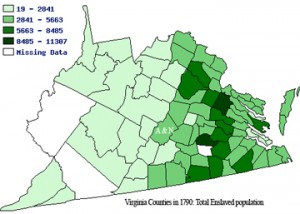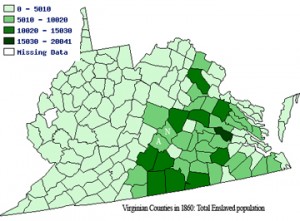When Carter G. Woodson first proposed a celebration of African American culture and history it was designated as a “week.” First observed in 1926 he called it “Negro History Week.” In 1976 this evolved into “Black History Month.” Ideally every day of the year we would recognize the historical and cultural contributions of African Americans. In this blog I will focus on African America history in Amherst County for the next 4 weeks.

African Americans joined European Americans as they migrated from eastern Virginia to the “West.” The Shenandoah Mountains created a natural barrier to this 18th-century expansion and several large land grants were applied for just east of this high ridge. Several counties were founded in this region in the mid-18th century, including Amherst (in 1761). To understand the growth of the African-American population (both Free and enslaved), we turn to a quantifiable historic record, the first US Census, held in 1790. In that year 40% of Amherst County’s population was enslaved (Total population: 13,703; enslaved population 5,296; source University of Virginia Historical Census Browser).

By 1860, on the eve of the Civil War, the enslaved population was 6,278 (after a peak of 7,462 in 1800). The maps (modified from the Census Browser) indicate the relative number of slaves in Amherst as compared to the surrounding Virginian counties. Note: in 1790 Amherst (“A” on the map) and Nelson (“N” on the map) were not yet separated and in both maps today’s West Virginia was still part of the state of Virginia.
